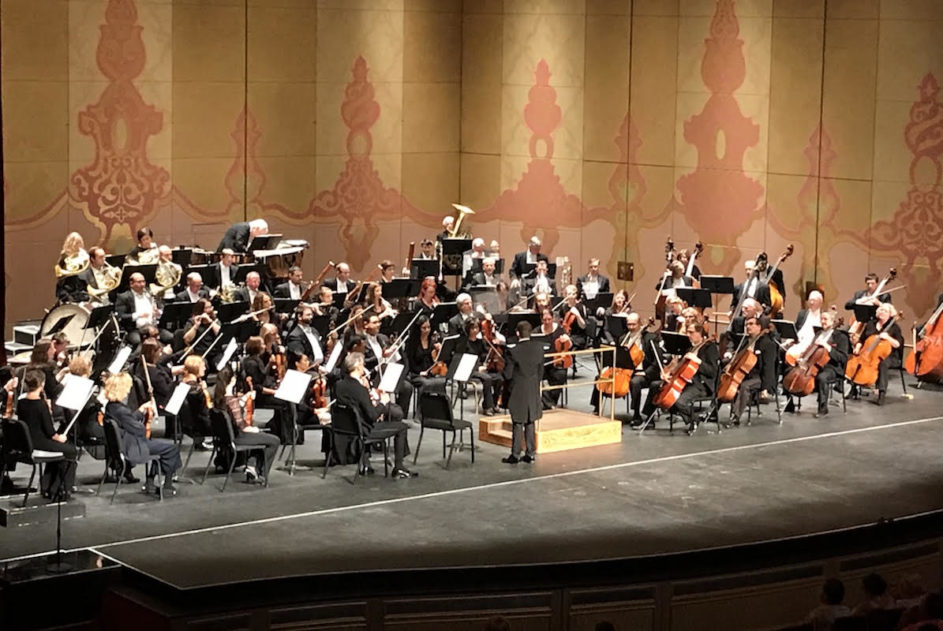With the rehearsals and 17-performance run of Leonard Bernstein’s “Candide” just finished
at Clarence Brown Theatre, in the CBT and Knoxville Symphony’s stunning joint production, KSO music
director and conductor Aram Demirjian and the symphony musicians came on stage at the Tennessee
Theatre Thursday night ready to go.
It was a good thing.
Because after playing the national anthem, the traditional salute to America that
begins American orchestras’ concert seasons, American composer Jonathan Leshnoff’s short,
aptly titled piece “Starburst” took off in a blast of energy.
It filled the musical sky with staccato flashes of sound that built into constellations of
instrument voices, then drifted away until only Gary Sperl’s star clarinet was left for a solo
cadenza.
Then the rush of energy was back, exploring more suspenseful territory before building into
an explosion of sound.
Leshnoff already has a collection of tonal works to his credit, among them several concertos
and four symphonies. “Starburst” is his most frequently performed because it is easy to program
and energizes both musicians and audiences.
Next, South Korean pianist Joyce Yang took the audience on another high-octane ride with
the solo piano opening of Sergei Rachmaninoff’s “Piano Concerto No. 2 in C minor,” Op. 18,
written in 1901, one of a small group of concertos that begin with the piano alone.
Sometimes soloists are in a world of their own, seemingly oblivious to the orchestra on stage
with them. They pay little attention to either the orchestra or communicating with the conductor.
The last time violinist Midori performed here she played inside her own bubble.
Not so with Yang. She and Demirjian paid close attention to each other. The result was a
performance in which the piano was as much an instrument in the orchestra as it was the starring
voice.
There were moments when Yang submerged the piano deep into the orchestral texture.
In the “Adagio” second movement, Yang’s piano played the background accompaniment as
Hannah Hammel’s flute and Sperl’s clarinet played Rachmaninoff’s melody. Then they
changed roles, with the piano taking the lead.
It was the kind of performance that tells the story of the music very well, instead of a soloist
showing off, while the orchestra is little more than a back-up band trying to keep up.
Then, to prove she hadn’t run out of gas, Yang played a sensational encore of Argentine
composer Alberto Ginastera’s rampaging “Dance of the Arrogant Cowboy,” from his 1937
“Opus 2” set of three dances.
Johannes Brahms’ “Symphony No. 1 in C Minor,” Op. 68, that concluded the program, gave
the KSO another opportunity to show its maturing form under Demirjian.
Brahms was 43 before he completed his first symphony. His admiration for the symphonies
of Beethoven and his insecurity about his own shortcomings kept him at work on the piece for
21 years.
His four symphonies are now ranked with Beethoven’s and among the weightiest
symphonies ever written. The KSO’s solid performance of his “First” showed why.
In the first movement there was a lovely oboe solo played by principal oboe Claire
Chenette. It was picked up an extended by principal clarinet, Gary Sperl.
In the third movement there were lovely, hymn-like passages played by the brass section.
With a season-beginning concert as good as this one, KSO audiences have a lot to which to
look forward.

